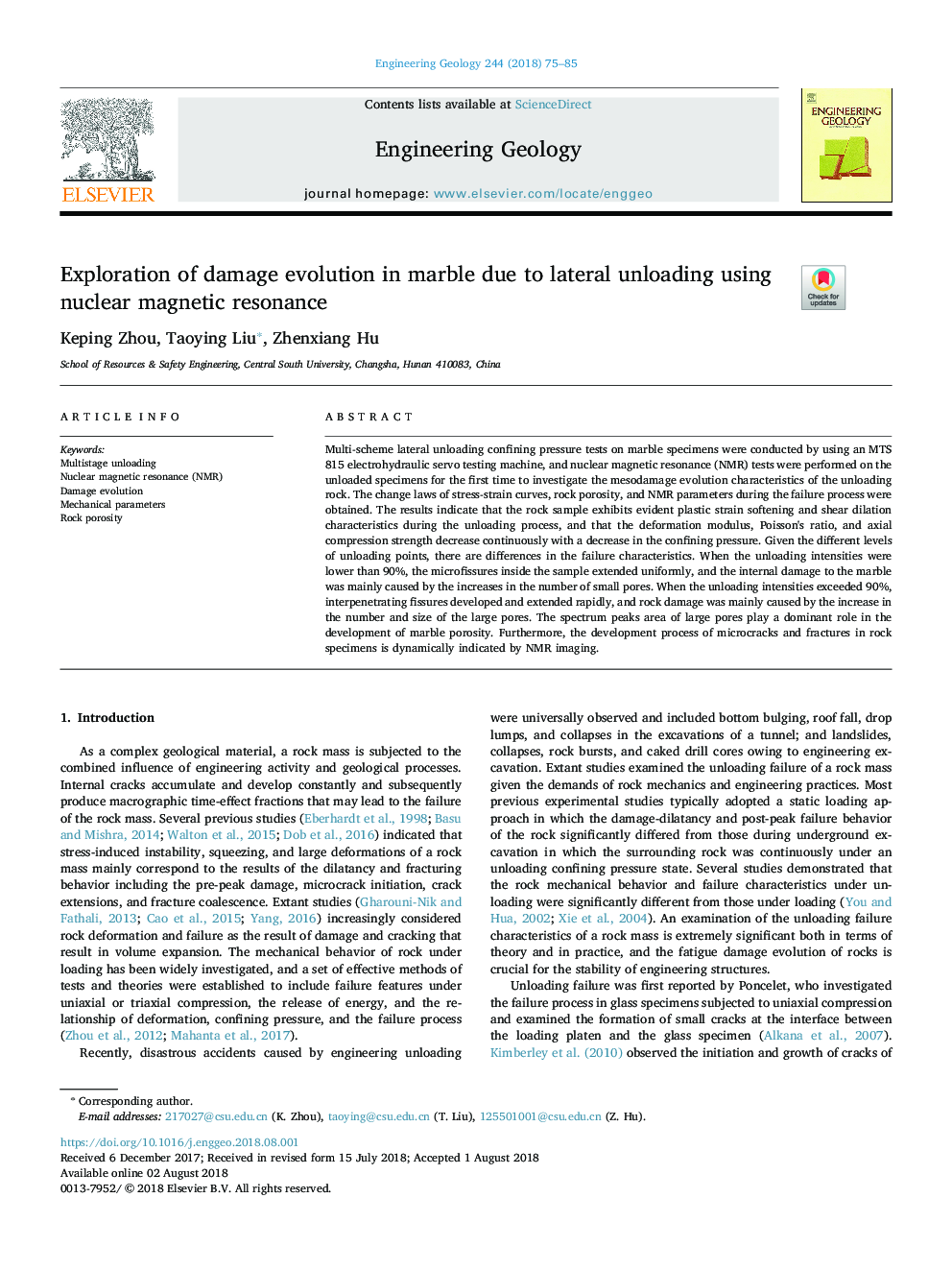| Article ID | Journal | Published Year | Pages | File Type |
|---|---|---|---|---|
| 8915781 | Engineering Geology | 2018 | 11 Pages |
Abstract
Multi-scheme lateral unloading confining pressure tests on marble specimens were conducted by using an MTS 815 electrohydraulic servo testing machine, and nuclear magnetic resonance (NMR) tests were performed on the unloaded specimens for the first time to investigate the mesodamage evolution characteristics of the unloading rock. The change laws of stress-strain curves, rock porosity, and NMR parameters during the failure process were obtained. The results indicate that the rock sample exhibits evident plastic strain softening and shear dilation characteristics during the unloading process, and that the deformation modulus, Poisson's ratio, and axial compression strength decrease continuously with a decrease in the confining pressure. Given the different levels of unloading points, there are differences in the failure characteristics. When the unloading intensities were lower than 90%, the microfissures inside the sample extended uniformly, and the internal damage to the marble was mainly caused by the increases in the number of small pores. When the unloading intensities exceeded 90%, interpenetrating fissures developed and extended rapidly, and rock damage was mainly caused by the increase in the number and size of the large pores. The spectrum peaks area of large pores play a dominant role in the development of marble porosity. Furthermore, the development process of microcracks and fractures in rock specimens is dynamically indicated by NMR imaging.
Related Topics
Physical Sciences and Engineering
Earth and Planetary Sciences
Geotechnical Engineering and Engineering Geology
Authors
Keping Zhou, Taoying Liu, Zhenxiang Hu,
